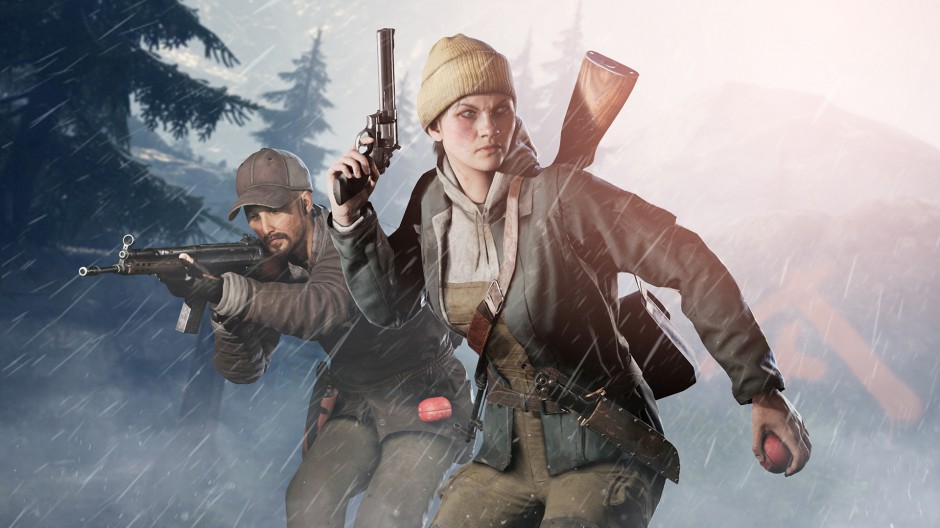

There's a mechanic where you can find food and donate it.

Still, I can't help but be intrigued by Vigor. The core aspects are in good shape, but there is definitely work to be done. Bells and whistles, like house customization, are still listed as "coming soon." It's not an entirely finished game. The gunplay still feels a little sloppy, with hits not always registering as they should. This is a widely-reported issue, so I know it's not my connection. One's feelings on Encounters aside, there are undeniable technical issues with Vigor. Playing for hours and achieving nothing doesn't always make for fun gameplay. There's that feeling of dying several times in a row, of always being put back to the start, that sticks with me over long sessions.

I do, however, find them immensely frustrating sometimes. I know I suck at battle royales, but I can still enjoy them and respect them for what they are. I've won two Apex Legends matches in my lifetime, I think. I should confess that I'm one of those people who hates that Fortnite is about building more than gunplay. Do you skirt the outside of the map, picking up small amounts of common loot while staying safe? Or do you go for the bounty of the airdrop, knowing that if you die you get nothing and lose your guns? It's the kind of thing hyper-competitive PUBG types love. Bohemia's intention was probably to make risk-reward management a big part of the experience.

When you're killed in an Encounter, you lose everything you were holding (unless you pay for insurance at the Encounter's start). Or perhaps you want the motherlode of all loot: the airdrop. Maybe you want to hunt down the safe, a one-time payout of riches that takes time to open. You can simply go from building-to-building, checking drawers for any leftover contents. A radiation storm is always just miles away, meaning you have limited time to loot as much as you can and escape to the safety of your shelter. The maps are well varied, from snowy woodlands to a waterfront village to an abandoned train station. You and 7-11 other players enter a section of war-torn Norway. How do you repair it? By going out on Encounters!Įncounters are the meat of the game. As the house is your hub area, the idea is that you become invested in repairing it. After hitting enough improvement milestones, your house gets a visual upgrade. Collecting enough materials will give you the ability to construct house improvements like a workbench or water purifier. Random nails from construction, intact glass from torn-up kitchens, gasoline from busted cars, all of it serves the purpose of turning your house into a home. The Charleville 1789 Shield Musket that players receive early on in the game gets the job done rather well and is capable of making enemy encounters significantly easier in the early game.Like in most post-apocalyptic games, you need to gather materials to survive. The Soldier will be more versatile than the Bodyguard, as the former comes with a Ranged Attack as its special move. However, the Bodyguard class will receive a big mallet, which has a longer wind-up but deals the highest amount of physical damage in the early game. It deals with a significant amount of physical damage and comes with a good deal of range. Weapons like the Gribeauval Halberd will be an incredible option for the build. This build centers around maximizing Aegis’ physical output and going in for trades with enemies.įor the Power build, players will be required to use heavy weapons, and to do so, they will need to opt into either the Bodyguard or the Soldier class when starting the game. Players looking for a more straightforward playstyle can go for the Power build in Steelrising.


 0 kommentar(er)
0 kommentar(er)
